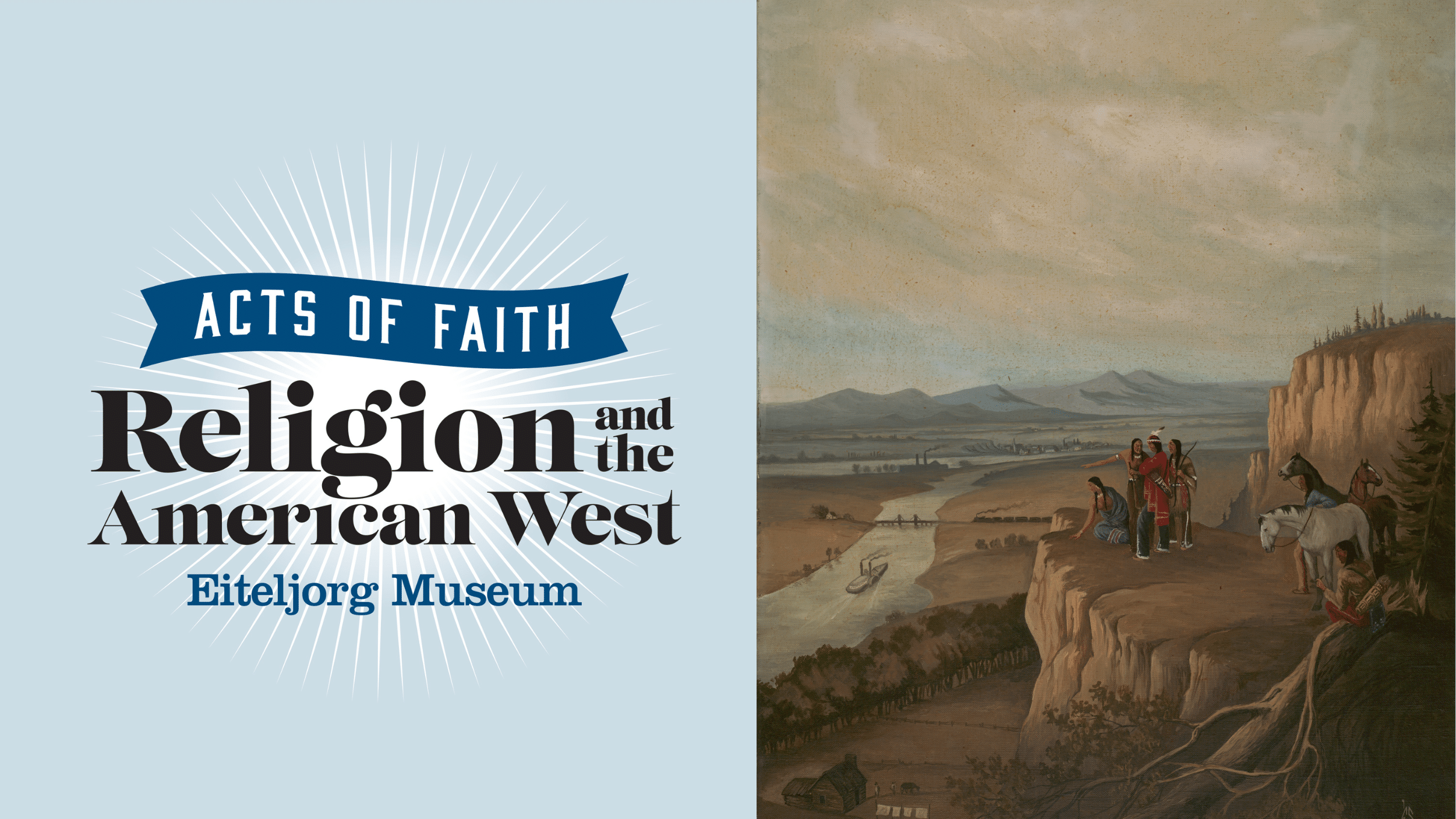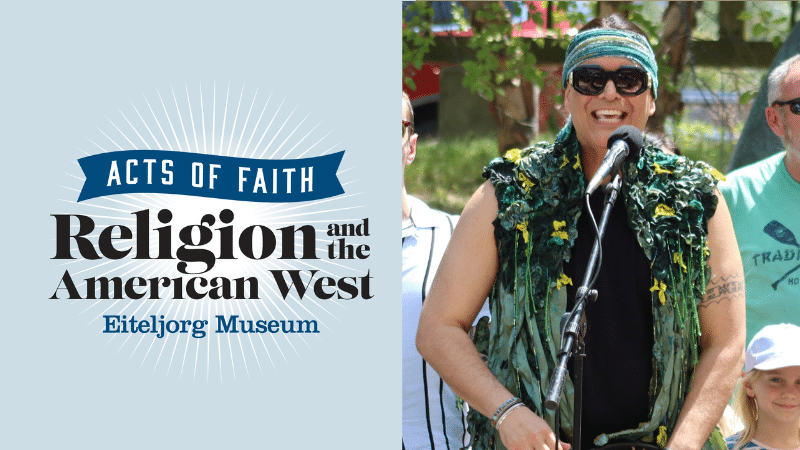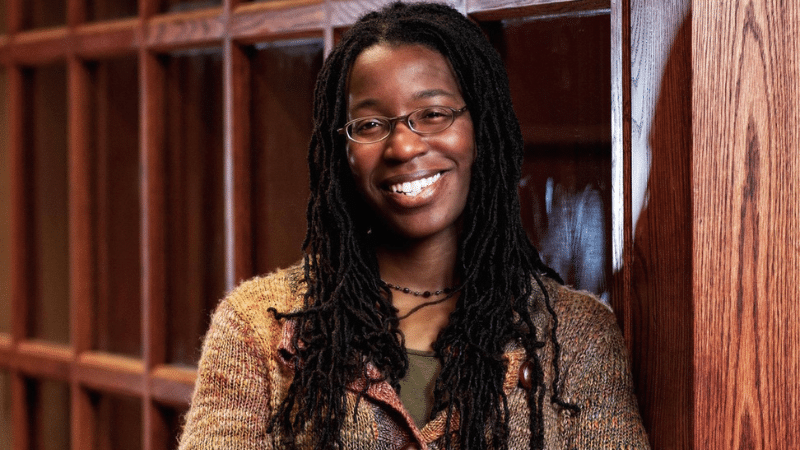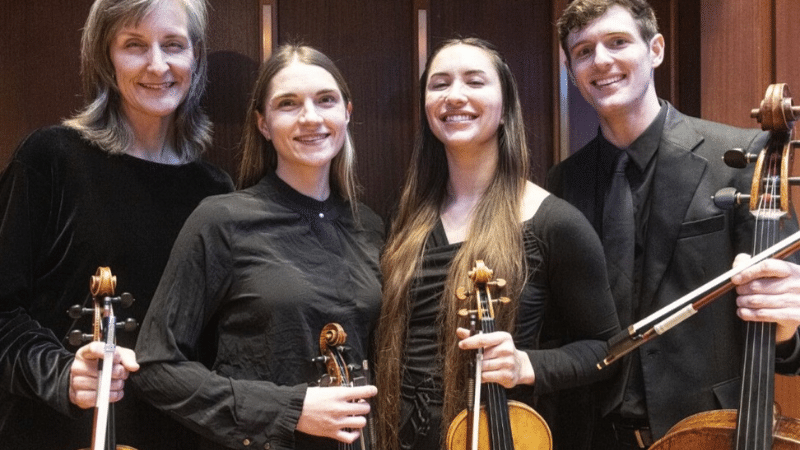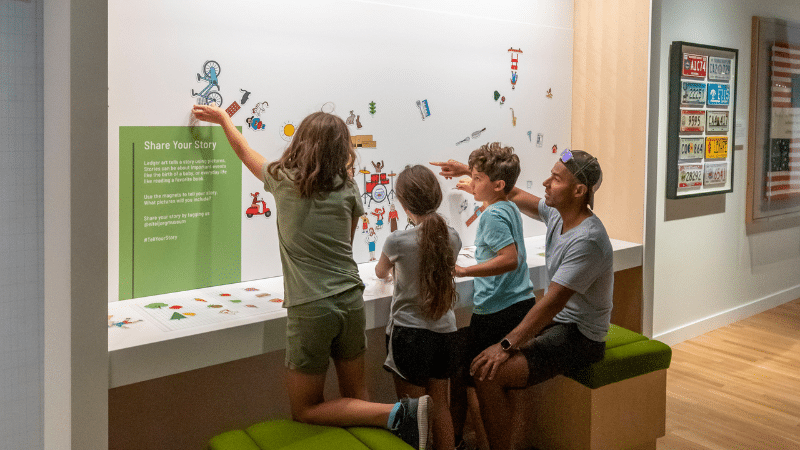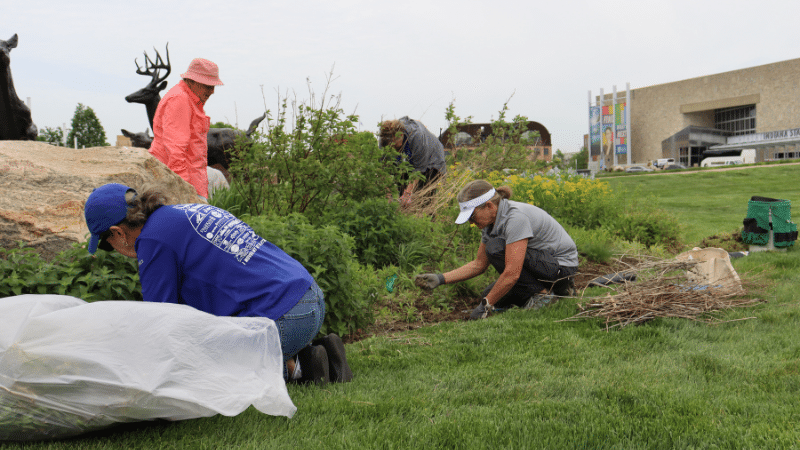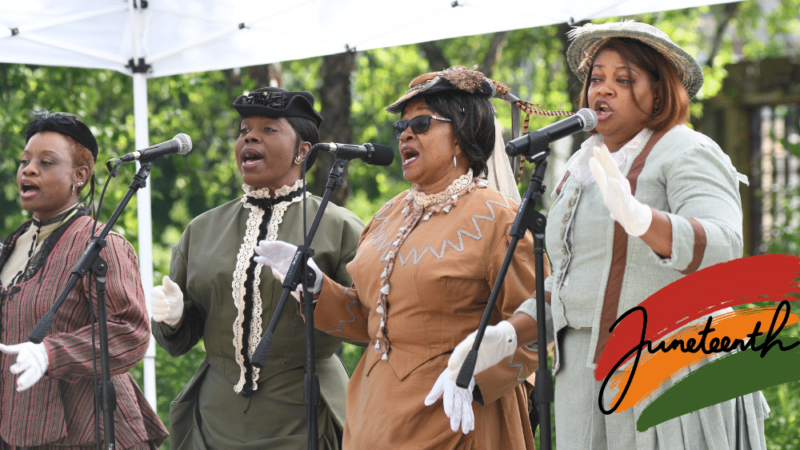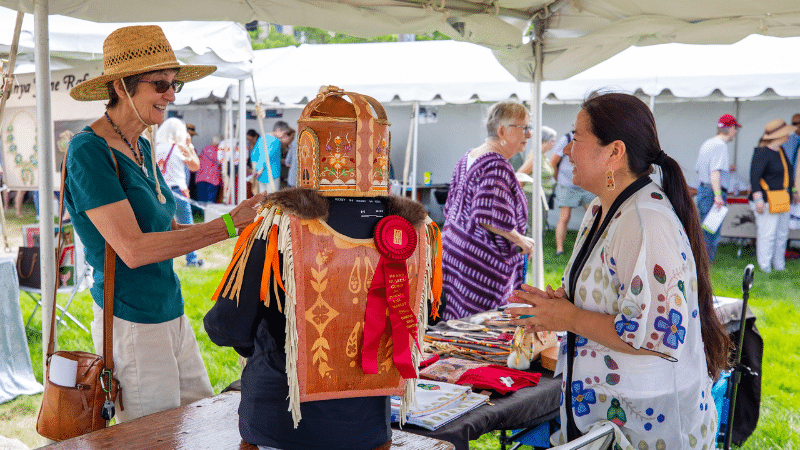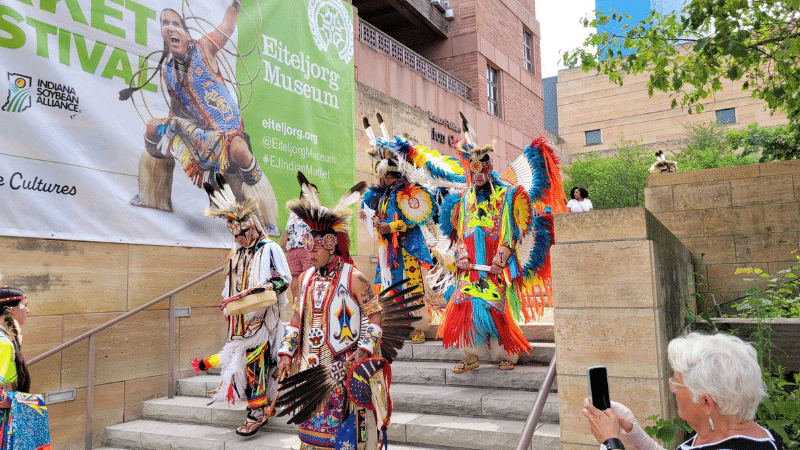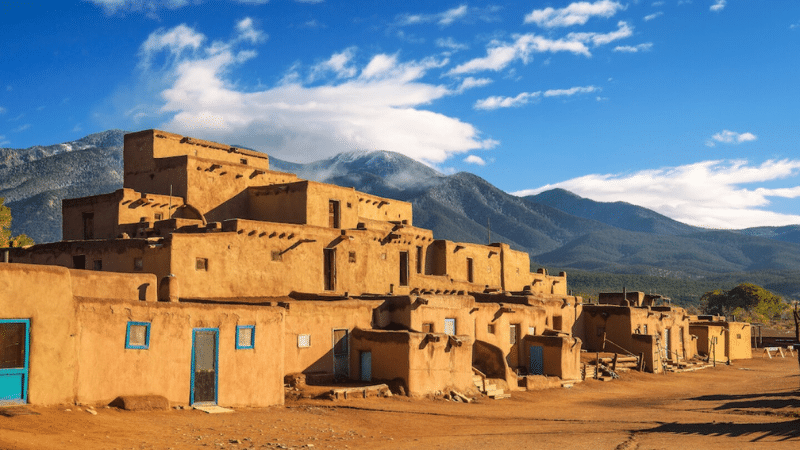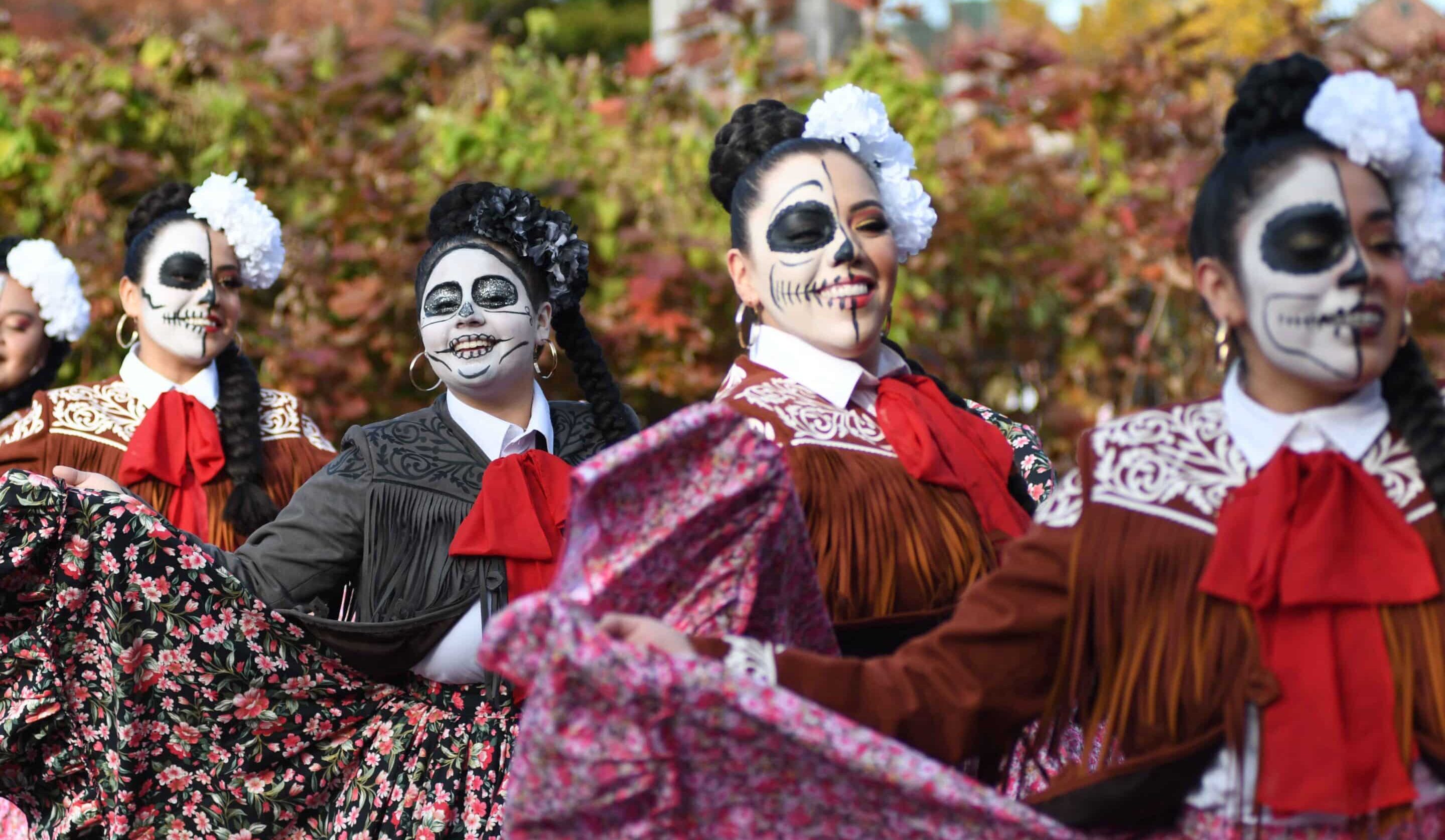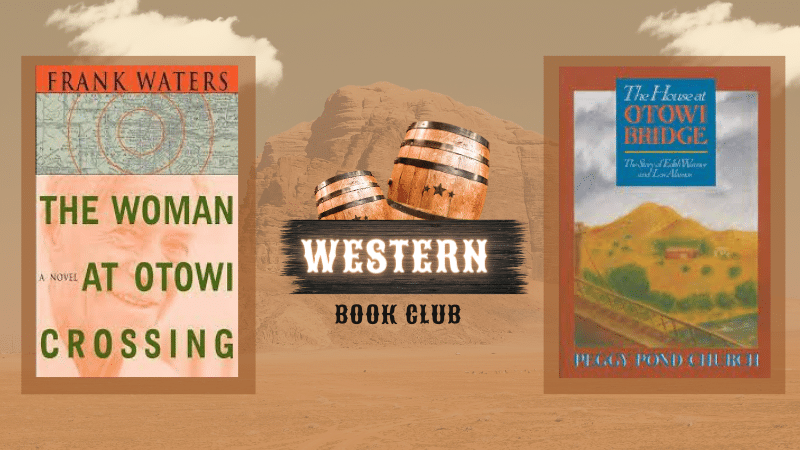News Release: Contemporary photographs of Southern Plains Native America on exhibit at Eiteljorg
Smithsonian traveling exhibition features poignant moments by photographer Horace Poolaw

Caption: Gus Palmer (Kiowa, at left), side gunner, and Horace Poolaw (Kiowa), aerial photographer, in front of a B-17 Flying Fortress. MacDill Field, Tampa, Florida, ca. 1944. 45UFL14
INDIANAPOLIS – An exhibition at the Eiteljorg Museum of American Indians and Western Art features more than 75 striking photographs of Native peoples of the Southern Plains during the mid-20th century, photographed by artist Horace Poolaw (Kiowa), whose images provide an insightful look at Oklahoma tribal members’ lives during an important time of change and adaptation.
The exhibition For a Love of His People: The Photography of Horace Poolaw is organized by the Smithsonian National Museum of the American Indian. Curated by Tom Jones (Ho-Chunk) and Nancy Marie Mithlo (Chiricahua Apache), the exhibition is on view at the Eiteljorg Museum through Aug. 9, 2020. (The exhibition originally was scheduled to close April 5, but due to the pandemic it was extended by four months, so more visitors can experience it.)
Poolaw (1906-1984) was a professionally trained photographer whose black-and-white images depicted in both portraiture and documentary style the people and events in the Kiowa community in and near Anadarko, Oklahoma, in the years before, during and after World War II. Parades, fairs, sporting events, weddings, funerals and military ceremonies were among his subjects. As a member of the Kiowa community who understood its nuances, Poolaw had an insider’s perspective and the access to photograph poignant scenes of family life. During the war, Poolaw served as an aerial photography instructor in the U.S. Army Air Forces (the predecessor to today’s United States Air Force) and many of his photographs over his artistic career reflect the military service of Native peoples during World War II and the Korean and Vietnam war eras.
Poolaw documented the Kiowa and other Native peoples of the Southern Plains as full participants in contemporary American life while displaying their connections to tradition. Among the events he photographed were the first Native American-operated inter-tribal event, the American Indian Exposition (or Indian Fair) held annually in Anadarko, and the Craterville Indian Fair. Poolaw included the Oklahoma landscape and surroundings in his photos, creating a realistic and natural depiction of people and their environment between the 1920s and 1970s. Poolaw’s photographic achievements were not fully appreciated in his lifetime; but in recent years, his photographs have been rediscovered and, with the permission of his family, curated for the Smithsonian’s exhibition. The exhibition was first presented at the National Museum of the American Indian in New York and Washington, D.C., before traveling.
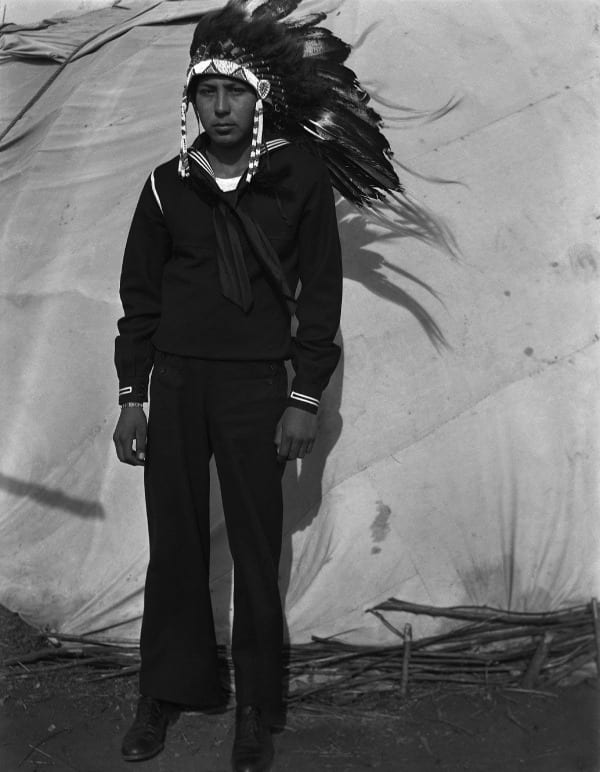
Jerry Poolaw (Kiowa), on leave from duty in the Navy. Anadarko, Oklahoma, ca. 1944. © Estate of Horace Poolaw.
“The Eiteljorg’s relationship with the National Museum of the American Indian has allowed us to share items from the NMAI collection over the past many years. We are especially pleased to have the opportunity to continue the relationship and present this special exhibit,” said Elisa Phelps, Eiteljorg Museum vice president and chief curatorial officer. “Horace Poolaw’s photographs offer us a window into mid-20th century Kiowa life. The images are very compelling as they document the day-to-day life of families, soldiers, children, tribal members and the community during a time of great change for Native peoples,” she said.
The co-curator of the exhibition, Jones, is a contemporary photographer and University of Wisconsin assistant professor. He and his students took high-resolution scans of Poolaw’s negatives and cleaned and printed them to create this exhibition. Locally, the exhibition is curated by Dorene Red Cloud (Oglala Lakota), who is the assistant curator of Native American art at the Eiteljorg.
For a Love of His People: The Photography of Horace Poolaw is on exhibit in the Eiteljorg’s Hurt and Harvey galleries, and is included with regular museum admission. Part of the Eiteljorg’s 30th anniversary observance, this exhibition is sponsored locally by Capital Group, Ice Miller LLP, Barnes & Thornburg LLP, the Boren Foundation, Care Institute Group Inc., Sycamore Advisors LLC, Roberts Camera, Printing Partners and an anonymous donor. A Smithsonian-published exhibition catalogue is available in the Frank and Katrina Basile Museum Store.
About the Eiteljorg Museum
Celebrating 30 years of telling amazing stories in 2019, the Eiteljorg Museum of American Indians and Western Art in White River State Park in downtown Indianapolis seeks to inspire an appreciation and understanding of the art, history and cultures of the American West and the Indigenous peoples of North America. Located on the Central Canal at 500 West Washington St., the Eiteljorg Museum was named one of the USA Today Readers’ Choice 10 Best Indiana Attractions.
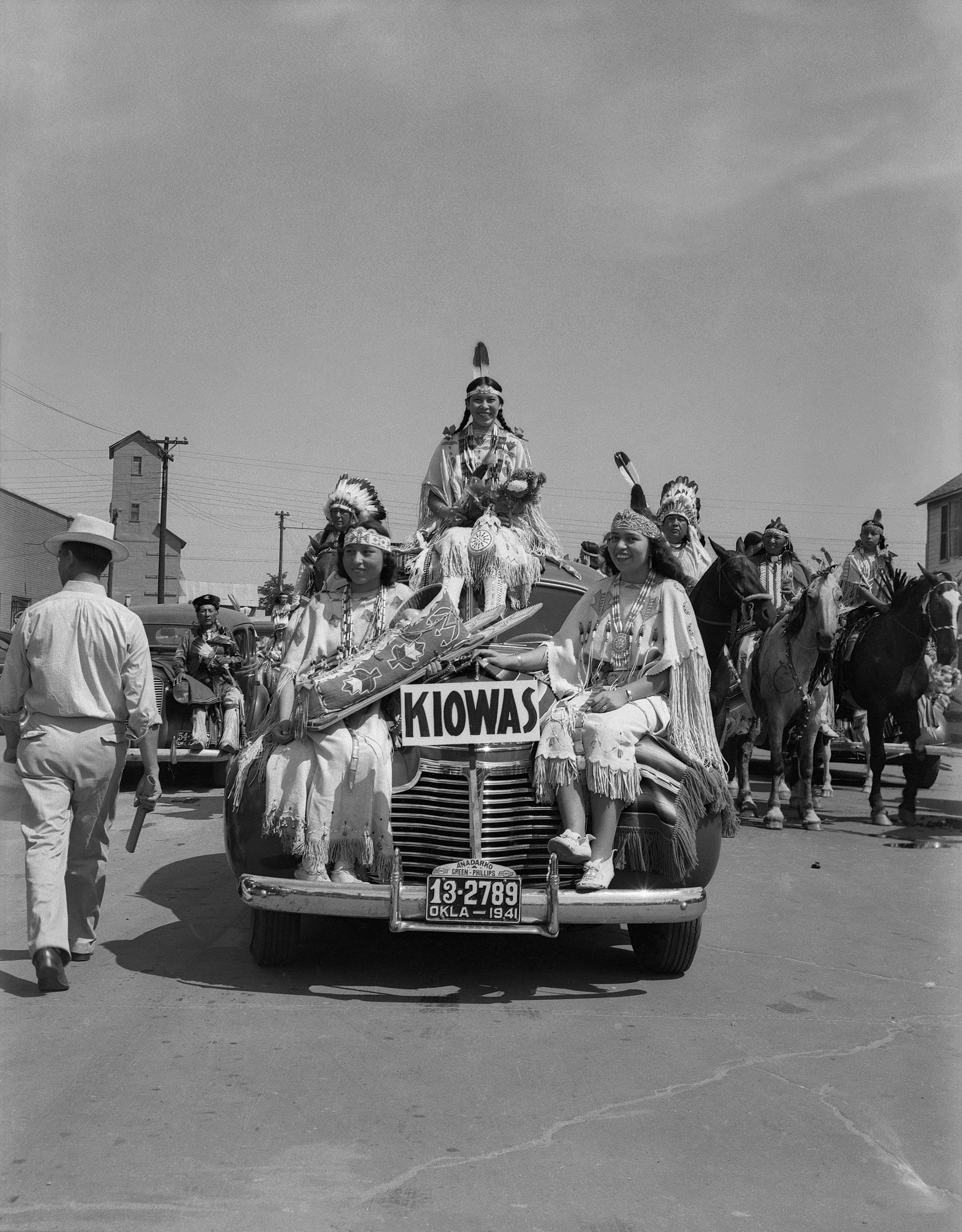
Caption: Left to right: Juanita Daugomah Ahtone (Kiowa), Evalou Ware Russell (center), Kiowa Tribal Princess, and Augustine Campbell Barsh (Kiowa) in the American Indian Exposition parade. Anadarko, Oklahoma, 1941. 45EP9
Tom Jones 2 1/2 hours of cleaning
Media Contacts:
Bryan Corbin
Public Relations Manager
317.275.1315
bcorbin@eiteljorg.com
Bert Beiswanger
Director of Marketing and Communications
317.275.1317
bbeiswanger@eiteljorg.com
Hyacinth Rucker
Digital Communications Manager
317.275.1388
hrucker@eiteljorg.com


